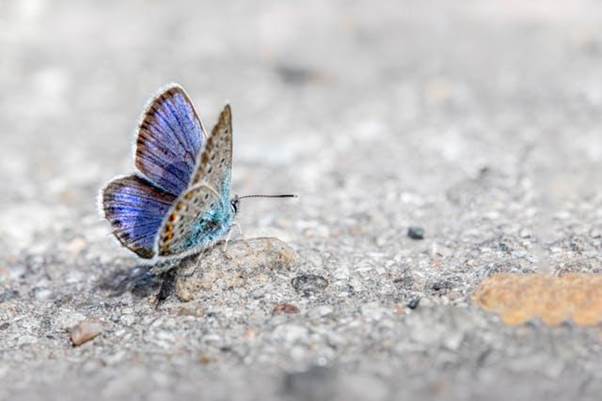Butterflies are among the most enchanting creatures in the natural world, admired for their delicate beauty and vibrant colors. At the center of this fascination are butterfly wings, which are more than just stunning displays of color. These wings play critical roles in flight, survival, communication, and even scientific discovery. From ancient evolutionary origins to their modern impact on technology and ecosystems, butterfly wings represent a perfect blend of art and function.
Table of Contents
This article explores their definition, history, importance, benefits, challenges, and real-world examples, providing a deeper appreciation for these natural masterpieces.

What Are Butterfly Wings?
Butterfly wings are thin, flexible membranes made primarily of chitin, the same material that forms an insect’s exoskeleton. They are covered with thousands of microscopic scales that overlap like roof tiles. These scales create dazzling patterns and colors while protecting the fragile wings.
Key features of butterfly wings include:
- Forewings and hindwings that coordinate during flight
- Coloration from pigments and light reflection
- Wing veins that provide strength and circulation
The unique structure of butterfly wings makes them both lightweight and powerful, enabling efficient movement and survival.
Related article: Are Monarch Butterflies Poisonous?
Evolutionary Background of Butterfly Wings
The history of butterfly wings stretches back millions of years. Fossil evidence shows that early Lepidoptera developed wing scales not just for flight but also for thermoregulation and predator defense. Over time, these wings evolved into intricate patterns used for camouflage, mimicry, and warning signals.
The evolution of butterfly wings highlights natural selection’s role in shaping survival strategies. From the muted tones of forest-dwelling butterflies to the vivid colors of tropical species, their wings represent both adaptation and artistry.
Importance of Butterfly Wings in Nature
Butterfly wings are more than decorative they are essential for ecological balance:
- Flight and migration: Wings allow butterflies to travel long distances, like the famous Monarch migration across North America.
- Camouflage and mimicry: Wing patterns help butterflies hide from predators or imitate other dangerous species.
- Thermoregulation: Wings absorb or reflect sunlight to regulate body temperature.
- Pollination: By enabling flight, wings help butterflies transfer pollen, supporting ecosystems.
Thus, the butterfly wings contribute significantly to biodiversity and ecosystem health.
Scientific Discoveries from Butterfly Wings
The microscopic structure of butterfly wings has inspired numerous scientific breakthroughs. Their scales manipulate light, creating iridescence through a process called structural coloration.
Applications include:
- Development of anti-counterfeit technology
- Eco-friendly paints and fabrics inspired by butterfly scales
- Solar panels that mimic the light-absorbing efficiency of butterfly wings
By studying butterfly wings, researchers are bridging the gap between biology and modern technology.

Benefits of Butterfly Wings
The role of butterfly wings extends beyond survival, offering multiple benefits to nature and humans:
- Indicators of ecosystem health: Changes in wing coloration or butterfly populations signal environmental shifts.
- Cultural inspiration: Their beauty influences art, fashion, and symbolism worldwide.
- Educational and scientific value: Studying wing structures provides insights into evolution and biomimicry.
These benefits underline why the butterfly wings are celebrated as both natural wonders and tools for discovery.
Challenges Faced by Butterfly Wings
Despite their strength, butterfly wings remain fragile and vulnerable to external pressures:
- Habitat destruction reduces the natural spaces butterflies need to thrive.
- Climate change affects migration patterns and wing coloration.
- Pollution and pesticides damage delicate wing scales and reduce survival chances.
Protecting the butterfly wings requires global efforts in conservation and sustainable practices.
Real-World Examples of Butterfly Wings
Some butterflies are especially renowned for their unique wings:
- Morpho Butterfly: Famous for its iridescent blue wings created by light reflection, not pigment.
- Monarch Butterfly: Recognized for its orange-and-black wings and long-distance migrations.
- Glasswing Butterfly: Features transparent wings that offer exceptional camouflage in forests.
These examples show the diversity and adaptability of butterfly wings across ecosystems.
Conservation of Butterfly Wings and Their Habitats
Conservation efforts focus on protecting butterfly habitats and reducing threats to their wings. Successful strategies include:
- Planting native host plants and flowers
- Minimizing pesticide use
- Supporting butterfly sanctuaries and gardens
By safeguarding butterfly habitats, we ensure the continued beauty and ecological importance of their wings.
Conclusion
The butterfly wings are more than nature’s artwork they are crucial for survival, adaptation, and scientific innovation. From evolutionary history to modern technological inspirations, butterfly wings embody the connection between beauty and function. Protecting them ensures the preservation of biodiversity and the wonders of nature. By valuing butterfly wings, we celebrate one of the most extraordinary designs evolution has ever produced.
1: What makes butterfly wings colorful?
Butterfly wings are covered with tiny scales that reflect and refract light, creating vibrant colors and unique patterns.
2: Why are butterfly wings important?
Butterfly wings help with flight, camouflage, attracting mates, and warning predators, making them vital for survival.
3: Can butterfly wings heal if damaged?
Minor wing damage may not stop flight, but severe tears cannot fully heal, often reducing mobility and lifespan.